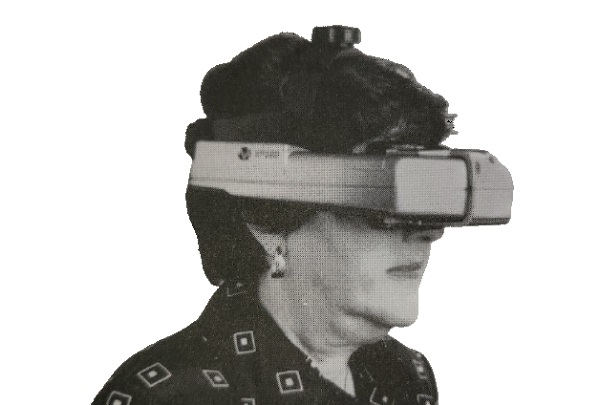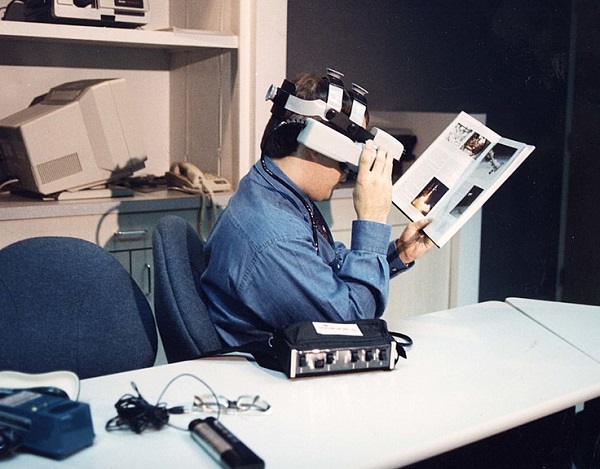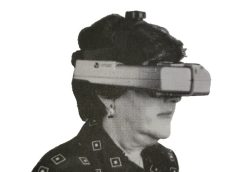
Headset: LVES (Low Vision Enhancement System)
Manufacturer: John Hopkins Medical Institutions, NASA
Cost: $3,000 (£2,196)
Resolution: Monochrome CRT, 500 X 500
Weight: 453 g (15.97 oz)
Field of view: 80 H (est.), custom optics
Video in: NTSC
Launch Date: November 1995
Estimated Value: $2-3,000
Other Features: Designed for those with serious visual impairment, but not blind. The design includes a single monochrome camera integrated into the front of the housing and a battery pack for portability.

Pictured above is NASA’s Technology Transfer Office at Stennis Space Center while they worked with the Johns Hopkins Wilmer Eye Institute in Baltimore, Md., to incorporate software originally developed by NASA to process satellite images into the Low Vision Enhancement System (LVES). The LVES, referred to as “ELVIS” by its users, was a portable image processing system that could make it possible to improve a person’s vision by enhancing and altering images to compensate for impaired eyesight. The system consists of two orientation cameras, a zoom camera, and a video projection system. The headset and hand-held control weigh about two pounds each. Pictured is Jacob Webb, the first Mississippian to use the LVES.
While it might sound as if this was an AR HMD it was in fact VR as there was no direct feed from the real world. LVES was tested on 25 patients who were not adequately treatable with classic rehabilitation devices. The good news is in 6 of the 25 patients a significant improvement was achieved using LVES and this was far from the last HMD they made. But they did wait for the technology to catch up a bit.
